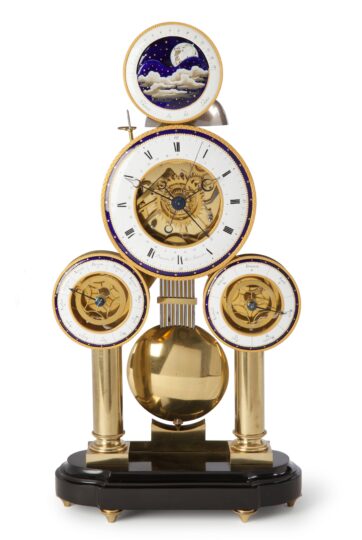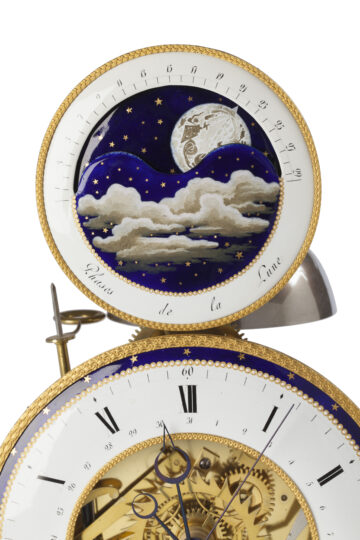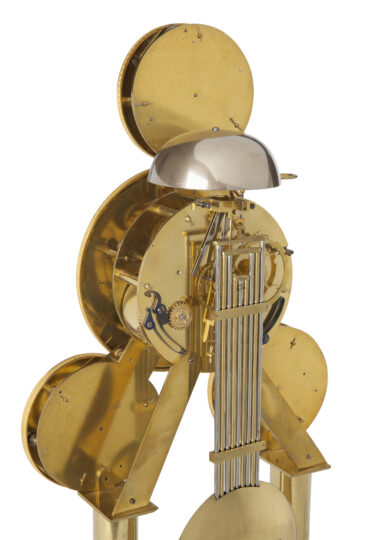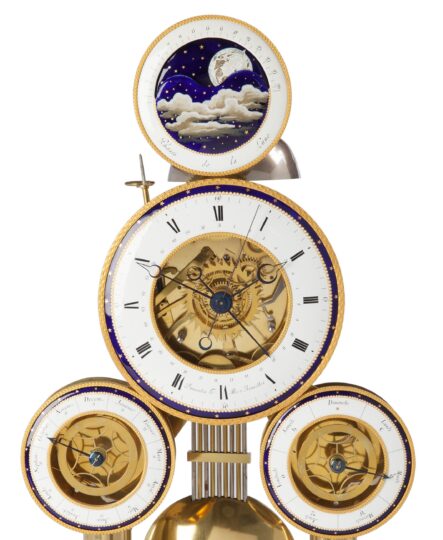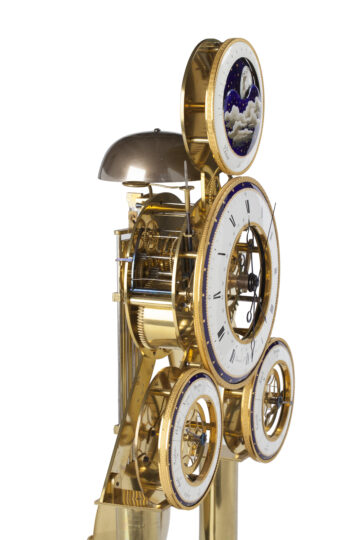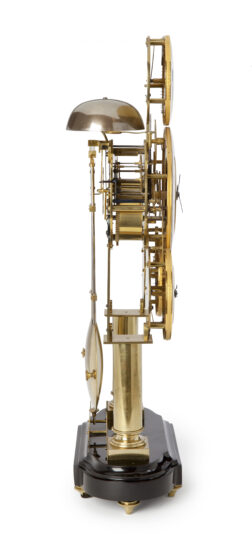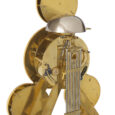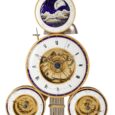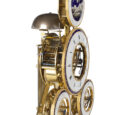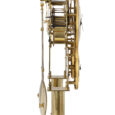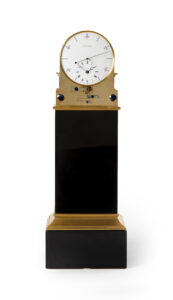SKELETON CLOCK Dumoulin H.er Méc. à Bruxelles 1809 Belgium
M&R73
Skeleton clock with full calendar and phases of the moon
Signed: Dumoulin Hr. Méc. à Bruxellea
Both springs signed and dated: Boursier May 1809
Belgium
The clock frame has ring-turned brass columns, which rests on a stepped black marble base with six tapering feet.
The white enamel Roman hour chapter ring has blued steel moon hands, the outer Arabic fifteen minute division has a blued steel seconds hand and the inner date ring has a blued steel arrowhead hand, the chapter ring is signed Dumoulin Hr. Méc à Bruxellea while the centre of the dial reveals some of the mechanics. The enameled moon phase above is flanked by a white enamel ring calibrated 1 to 29½ and is inscribed Phases de la Lune, the subsidiary white enamel ring to be found bottom left, indicates the months with their relevant number of days, the ring bottom right indicates the days of the week and their corresponding deity and each has a blued steel arrowhead hand. The four dials are decorated with borders of white pearls which are set in gold, three dials are flanked by blue enamel borders and decorated with gold stars.
The spring-driven movement has four back-pinned pillars, the going train has a pin-wheel escapement with a gridiron pendulum with nine steel and brass rods suspended on a knife-edge. The striking mechanism has an outside skeletonised countwheel, with hour and half-hour strike on a bell, both springs are signed Boursier May 1809.
Duration: 8 days.
Height 54 cm
Weight 28 cm
Dept 12.5 cm
Dumoulin
Although both the location and day of Dumoulin’s birth remain a mystery, we do know where he learned the clock trade. He was a pupil of Hubert Sarton, a clockmaker from Liège, and worked in Brussels from 1804 till 1806. Dumoulin lived in Brussels in the Broekstraat opposite the gate of St.-Jans hospital and later moved to the Bergstraete. The Musée des Arts Décoratifs François Duesberg in Mons has a comparable clock of Dumoulin in their collection with four dials.X=3
Boursier
Boursier was known as a maker of springs for watches and clocks, and worked in Paris around 1812 in the Rue Saint-Martin. He also worked in Paris in the Rue des Vieux Augustins.
Literature
-E. Fraiture, Uurwerkmakers en uurwerknijverheid in Vlaanderen, Leuven 2002, p. 202.
François Duesberg, Musée François Duesberg, Bruxelles 2004, p. 107.
-Tardy, Dictionnaire des Horlogers Français, Paris 1972, p. 80.
MENTINK & ROEST, magnificent clocks from the Mentink & Roest Collection, p. 10-11.

